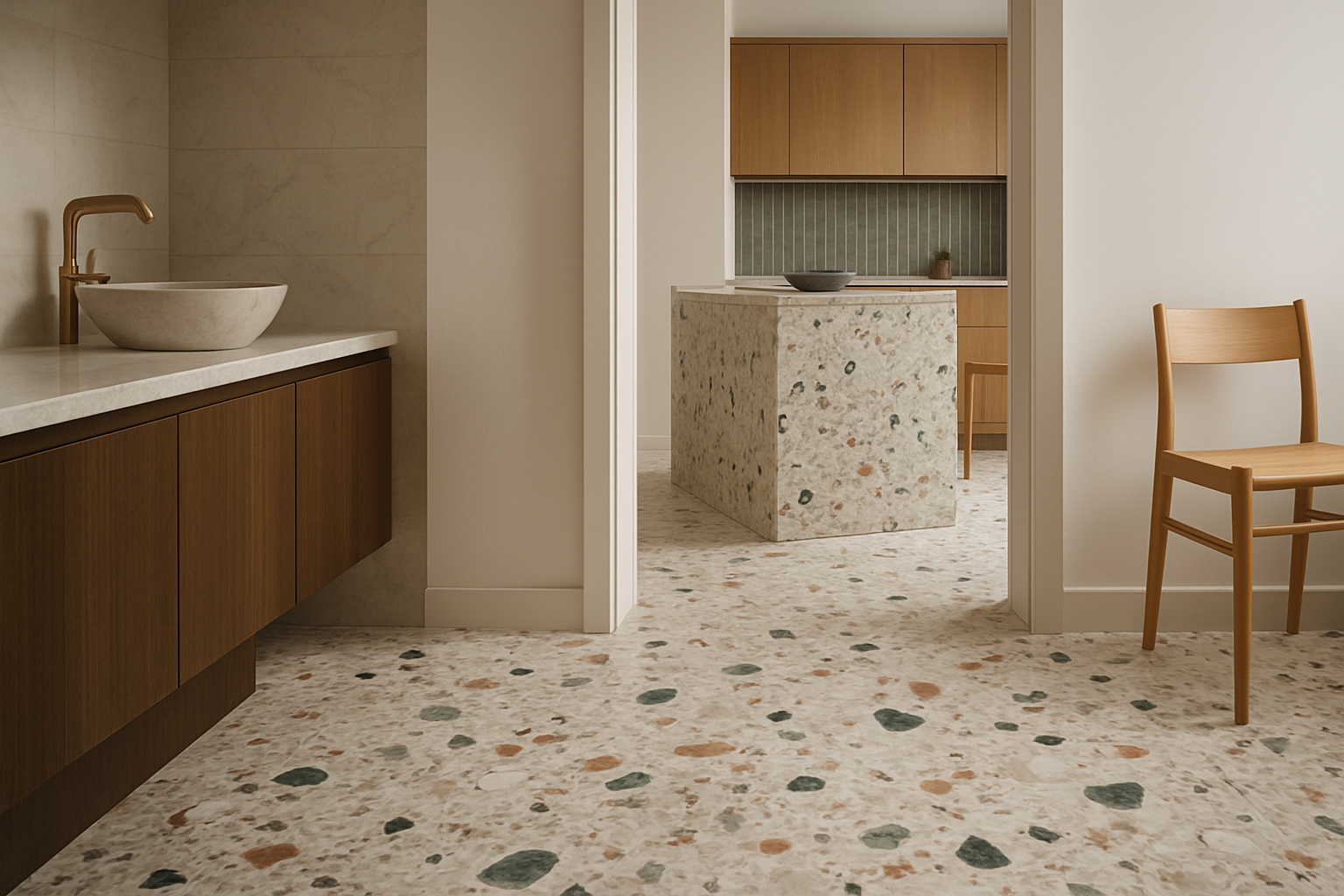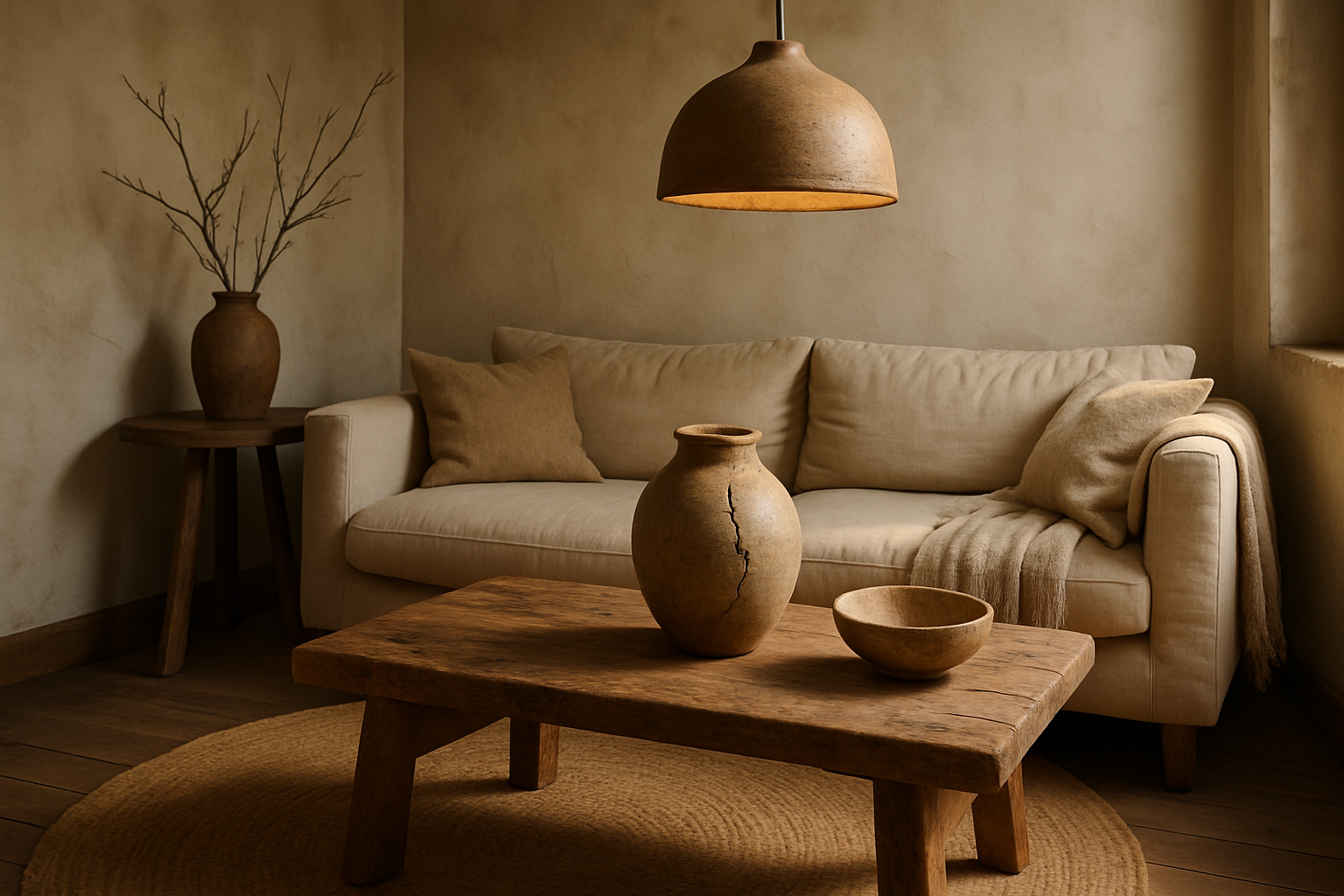Terrazzo's Triumphant Return: A Fresh Take on an Ancient Art
Terrazzo, the speckled composite material once relegated to institutional floors, is making a bold comeback in modern home design. This ancient art form, reimagined for contemporary spaces, is captivating designers and homeowners alike with its versatility and charm. From countertops to accent walls, terrazzo is proving its worth as a statement-making element that adds both visual interest and durability to interiors. Let's explore how this centuries-old technique is being reinvented for today's homes.

The term terrazzo comes from the Italian word for terrace, as these floors were often installed in outdoor spaces. Over time, the technique spread throughout Europe and eventually made its way to the United States in the late 19th century. It gained popularity during the Art Deco period of the 1920s and 30s, becoming a staple in public buildings and homes alike.
Modern Manufacturing Meets Ancient Artistry
Today’s terrazzo is a far cry from its humble beginnings. While the basic concept remains the same – embedding chips of material in a binding agent – modern manufacturing techniques have revolutionized the process. Traditional terrazzo required skilled craftsmen to painstakingly lay and polish each surface by hand. Now, advanced grinding and polishing machines allow for faster, more consistent results.
The materials used have also evolved. While marble chips remain popular, contemporary terrazzo can incorporate a wide range of aggregates, including recycled glass, metal, and even plastic. This versatility allows designers to create custom blends that perfectly match their vision, from subtle, monochromatic schemes to bold, colorful compositions.
Beyond the Floor: Terrazzo in Unexpected Places
One of the most exciting aspects of terrazzo’s revival is its application beyond traditional flooring. Designers and homeowners are finding creative ways to incorporate this material into various elements of interior design. Kitchen countertops crafted from terrazzo offer a unique alternative to granite or quartz, providing both durability and visual interest.
In bathrooms, terrazzo is making a splash as shower walls and vanity tops. Its water-resistant properties make it an ideal choice for wet areas, while its customizable nature allows for seamless integration with existing color schemes. Some designers are even using terrazzo to create statement furniture pieces, such as coffee tables or side tables, adding a touch of artistry to living spaces.
The Sustainability Factor
In an era where eco-consciousness is paramount, terrazzo’s sustainability credentials are contributing to its resurgence. Many modern terrazzo blends incorporate recycled materials, from glass bottles to construction waste, giving new life to items that might otherwise end up in landfills. Additionally, terrazzo’s longevity means less frequent replacements, reducing overall environmental impact.
The material’s thermal properties also contribute to its green appeal. Terrazzo floors can help regulate indoor temperatures, potentially reducing heating and cooling costs. When combined with radiant floor heating systems, terrazzo becomes an energy-efficient choice for climate control.
DIY Terrazzo: Bringing the Trend Home
While professional terrazzo installation remains a specialized skill, the trend has inspired a wave of DIY projects that capture the essence of the material. Crafty homeowners are creating terrazzo-inspired decor items using polymer clay, resin, or even contact paper. These projects range from small accessories like coasters and planters to more ambitious undertakings like faux terrazzo tabletops.
For those looking to incorporate the terrazzo look without a major renovation, wallpaper and textiles featuring terrazzo-inspired prints offer an accessible entry point. These options allow homeowners to experiment with the aesthetic before committing to more permanent installations.
The Future of Terrazzo in Home Design
As terrazzo continues to gain traction in residential design, we can expect to see even more innovative applications. Some designers are experimenting with oversized aggregate pieces, creating bold, graphic patterns that push the boundaries of traditional terrazzo. Others are exploring ways to combine terrazzo with other materials, such as wood or metal, for truly unique design elements.
The customizable nature of terrazzo makes it an ideal canvas for personal expression in home design. As manufacturing techniques continue to evolve, we may see the emergence of terrazzo that incorporates bioluminescent materials or smart technology, blending ancient artistry with cutting-edge innovation.
In conclusion, terrazzo’s resurgence in home design is a testament to its enduring appeal and adaptability. This ancient technique, reimagined for modern spaces, offers a perfect blend of durability, sustainability, and aesthetic flexibility. As homeowners and designers continue to seek out unique, personalized interiors, terrazzo stands poised to cement its place as a timeless yet thoroughly contemporary design element.





